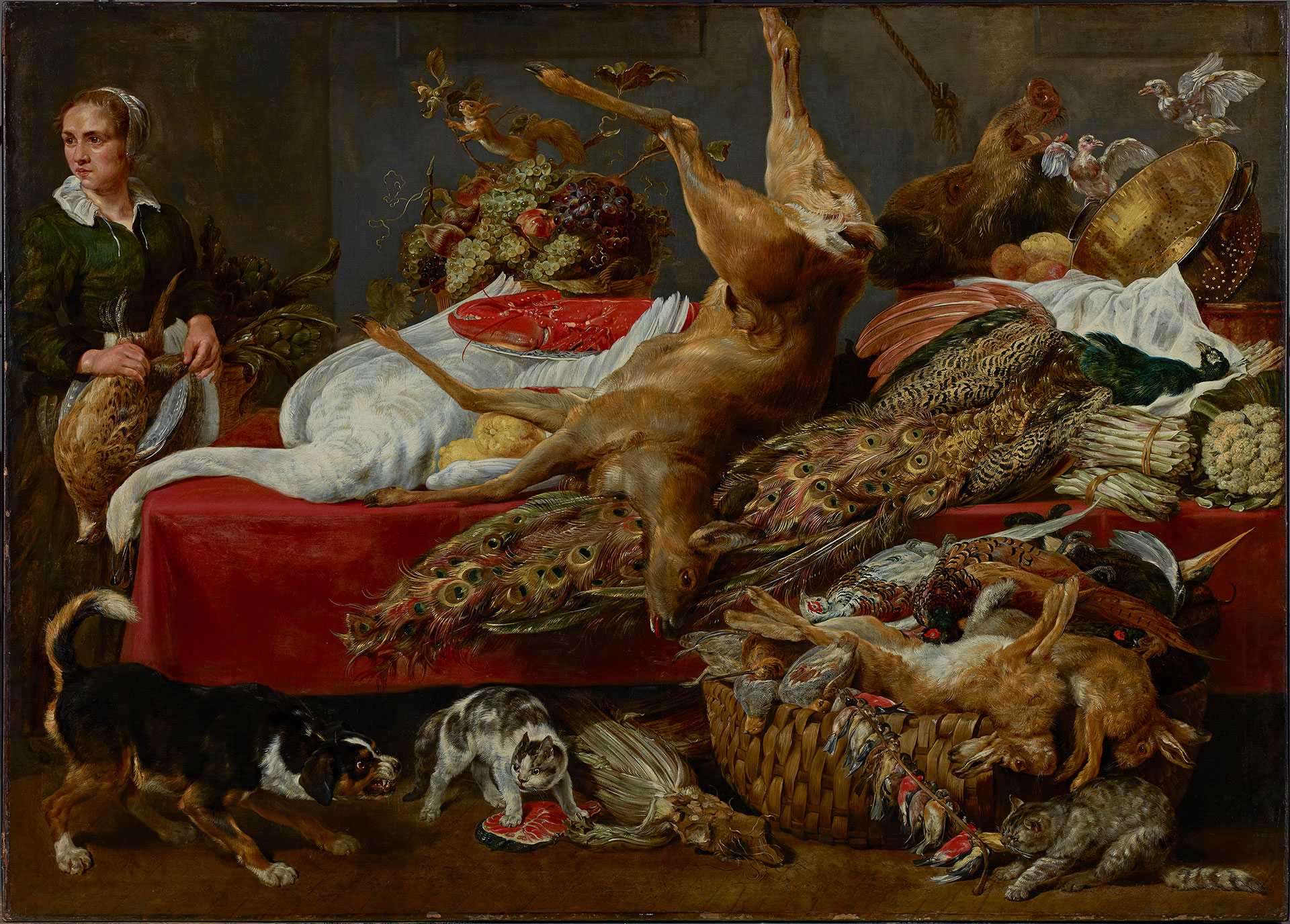
Paul de Vos (Hulst, Holanda, 1591/1595 – Amberes, Bélgica, 1678)
Still Life with Servant
circa 1650-1660
WORK INFORMATION
Oil on canvas
Nothing certain is known about Paul de Vos's date of birth, which probably occurred sometime between 1591 and 1595, given the conflicting information on his true age provided by the artist himself in his final years. His youth and training is also shrouded in mystery, although we do know that after working with little-known masters like David Remeeus and Denys van Hove, he became a master painter in 1620 in the city of Antwerp. His mentor was Frans Snyders, his sister's husband, who also specialised in painting still lifes and animals. In fact, Paul de Vos's artistic identity is inextricably linked to that of Snyders, with whom he collaborated on numerous occasions and whose works are so similar to his own that attribution is often problematic. Both were responsible for one of the most productive revivals of Flemish still-life painting in the 17th century. Like his brother-in-law, De Vos was a habitual collaborator of Rubens, whom he greatly admired, and the author of the natural elements in several of the renowned master's compositions. This type of collaboration was very common among Flemish artists at the time, and in other cases De Vos enlisted the aid of his own brother, Cornelis, for some of the figures in his still lifes.
Despite their similarities, there are several obvious differences that distinguish De Vos's work from Snyders's and define his singular artistic personality. The colours he used are mostly warm, ranging from yellows to browns, but tend to be lighter and paler than his brother-in-law's palette. His brushwork is looser, sacrificing the clear contours and rich textures of Snyders's compositions in favour of a more atmospheric, hazy general appearance. Paul de Vos's themes are more dramatic and tense, a fact best appreciated in his hunting scenes, which tend to be depicted in a more violent manner designed to make an impression on spectators. These are scenes of intense pathos whose dramatic component is also carried over to fable illustrations, another of his major specialisations.
In the still-life genre, exemplified by the Still Life with Servant in the Banco Santander Collection, the work of both artists is conceptually very similar, and their skill at depicting anatomically correct animals, complete with feathers, fur and hides, is almost identical. However, this piece clearly illustrates the characteristic vivacity which De Vos gave to live animals, whose poses are always very energetic, in contrast to Snyders's work. The female servant on the right may be a stellar example of collaboration with his brother Cornelis, who painted the human figures in several of his still lifes. The work reveals another typical feature of this artist's oeuvre: his ability to combine a still life, live animals in motion and human figures in a single scene.
Paul de Vos's fame spread beyond the city of Antwerp, and his works were distributed across Europe. He produced a vast body of pictorial work, becoming one of the most prolific artists of his day. His output included large-format canvases, countless drawings and several modellos. The decorative quality of his hunting scenes and the richness of his still lifes were highly prized and constantly demanded by contemporary collectors, both Flemish—like the Duke of Aarschot—and Spanish—such as the Marquess of Leganés, who owned a large number of his hunting scenes. His pictures also found favour with the great Baroque princes of Europe, including King Philip IV of Spain and the Emperor Maximilian. [José Juan Pérez Preciado]

